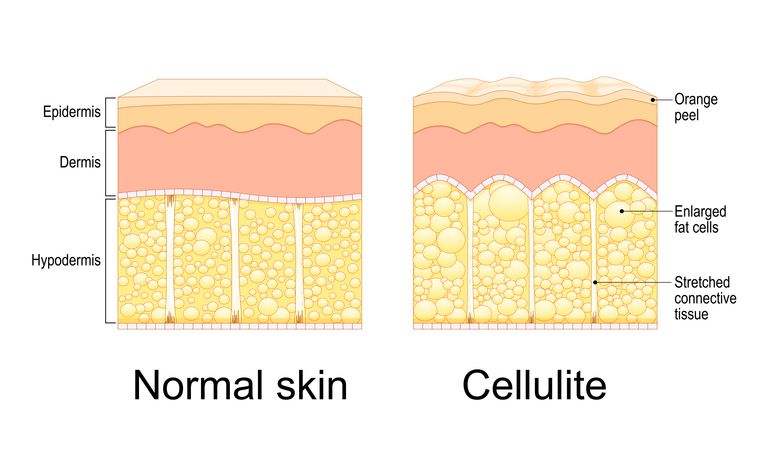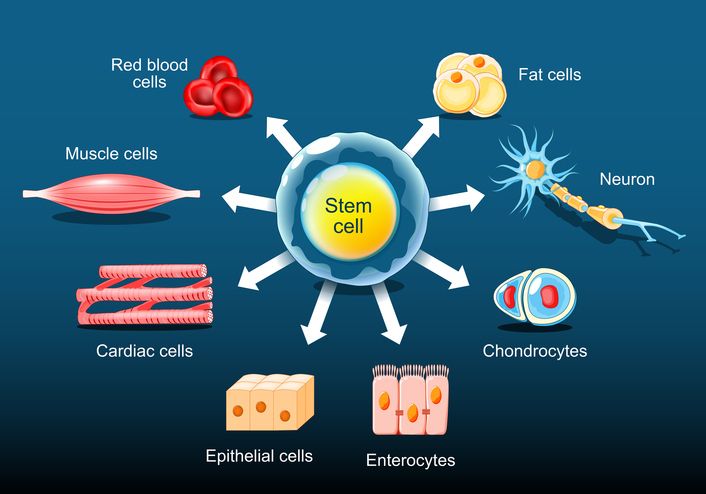Author: Natalie Ng|Updated: 16 May 2025
Cheek acne often shows up for a reason—whether it’s something going on inside your body or habits that are irritating your skin. Things like touching your face, not changing your pillowcase often, or skipping a gentle cleanser can all play a part. At the same time, breakouts on your cheeks might also be linked to hormonal fluctuations, poor sleep, or even how your body handles stress. Your skin reacts to more than just the products you use. It’s affected by oil production, how well your skin sheds dead skin cells, and how your immune system responds to things like acne causing bacteria. That’s why cheek acne can sometimes show up alongside other signs, like chin breakouts or forehead acne. If you’ve tried different acne treatments and still feel stuck with stubborn acne or cheek breakouts, there could be a deeper reason. Keep reading to find out what cheek acne could be telling you about your hormones, gut, and daily routine—and what you can do to treat cheek acne and prevent it from coming back.

Clogged Pores, Oil Buildup, and Bacteria Trigger Cheek Acne

Common belief
Many believe cheek acne meaning relates to poor gut health, but that idea is not backed by strong research. Popular advice often includes cutting out processed foods or doing gut detoxes to prevent cheek breakouts. While overall skin health can reflect your internal condition, cheek acne is usually not caused by digestive problems.
What really causes cheek acne
Most cheek breakouts come from blocked hair follicles. This often happens when dead skin cells mix with excess oil from sebaceous glands, trapping acne causing bacteria under the surface. Hormonal fluctuations can increase oil production, especially around the menstrual cycle. Dirty pillowcases, phone screens, or makeup brushes also spread bacteria and contribute to clogged pores.
Other triggers include comedogenic skincare products, frequent face touching, or using heavy hair products that lead to pomade acne. These habits all increase the risk of persistent acne and cheek breakouts. Acne cosmetica, a type of acne caused by the use of cosmetic and hair products, occurs when substances from these products transfer to the skin and block pores. Identifying such products and maintaining cleanliness in items that come into contact with the face and hair is crucial to prevent breakouts.
What helps treat and prevent cheek acne
Focus on skincare routines that reduce acne without irritating the skin. Use a gentle cleanser and choose acne treatments with salicylic acid or benzoyl peroxide. These ingredients help remove dead skin cells and fight acne causing bacteria. For more stubborn acne, topical retinoids, topical antibiotics, or hormonal birth control pills may help. A board certified dermatologist can recommend stronger treatments if over the counter options aren’t enough.

Hormonal Fluctuations Increase Oil and Lead to Cheek Acne

Common belief
Some assume that cheek acne directly points to hormonal imbalances. While hormones do affect skin behavior, there is no clear evidence that hormonal acne only shows up on the cheeks. The body’s hormone system can influence oil production across the entire face, not just one area.
This belief often leads people to focus only on hormone-related acne treatments without considering other causes like clogged pores, skincare habits, or bacterial buildup. Acne face mapping may suggest hormonal links, but it should not be used alone to diagnose hormonal imbalances.
What really causes cheek acne in this case
During hormonal changes—such as menstruation, stress, or stopping hormonal birth control—your body may produce more sebum. This increase in oil can clog pores and trigger cheek breakouts. These flare-ups are often paired with acne on the chin and jawline, where hormonal acne is more common. Chin acne, in particular, is often linked to hormonal fluctuations, especially androgens, which regulate sebum production.
Hormonal acne tends to appear as deeper, painful bumps rather than surface-level whiteheads. It may be stubborn and resistant to typical over the counter acne treatments, especially when hormone levels are constantly shifting.
What helps treat hormone-related cheek acne
If you suspect hormonal fluctuations are affecting your skin, track symptoms like irregular menstrual cycles, mood swings, or increased oiliness. Topical treatments such as benzoyl peroxide or salicylic acid may help reduce acne breakouts, but deeper issues often need medical support.
A board certified dermatologist might suggest hormonal birth control pills or oral prescription medications to help regulate hormones and reduce acne. Topical retinoids and skincare products that control oil production can also be part of an effective routine to manage acne caused by hormonal fluctuations.
Read More
Book Now to Experience
Acne Treatment
1 Minute Self-Registration
Date should not be before minimal date

High Stress Raises Cortisol and Worsens Cheek Acne
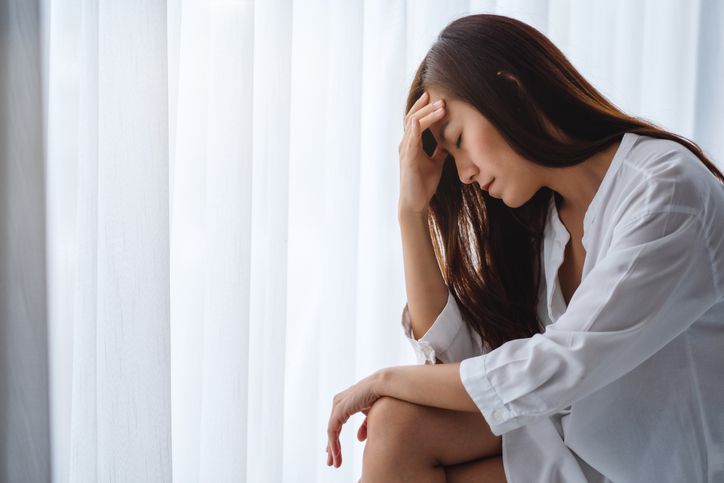
Common belief
Many people don’t connect stress with their breakouts, or they think stress only plays a minor role. But stress affects your body in ways that can make acne worse, especially if the breakouts appear often or take longer to heal. While stress itself does not directly cause acne, the changes it creates in your body can trigger flare-ups.
What really causes cheek acne in this case
When you’re under constant pressure, your body produces more cortisol. This hormone can increase sebum production, making your skin more oily. At the same time, stress weakens your skin’s natural barrier and slows down healing, making existing acne last longer and new breakouts more likely.
Stress also affects sleep, digestion, and immune function, all of which influence skin health. Lifestyle adjustments to alleviate stress, such as exercise and a balanced diet, can help maintain liver health and potentially improve skin health. This chain reaction may lead to persistent acne, especially on areas like the cheeks, where blood flow is high and the skin reacts more easily to inflammation.
What helps reduce stress-related cheek acne
Focus on a consistent skincare routine that includes a gentle cleanser and ingredients that reduce acne causing bacteria. Salicylic acid helps remove dead skin cells, while benzoyl peroxide controls inflammation and oil buildup. For more acne-prone skin types, topical retinoids may help normalize oil flow.
In more severe cases, where stress keeps triggering flare-ups, a dermatologist may suggest prescription treatments. While treating the skin directly is important, reducing chronic stress through better sleep and daily habits can also support clearer skin over time.

Dirty Pillowcases and Phones Can Cause Cheek Breakouts
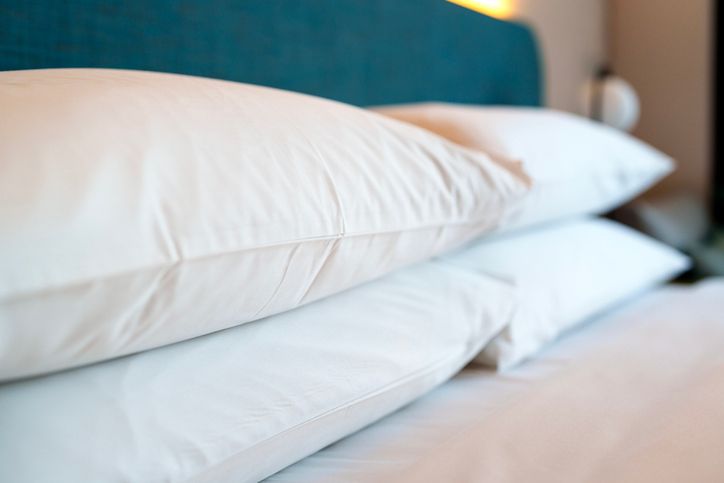
Common belief
Cheek acne is often blamed on internal causes, but external contact is just as important. Many people overlook how much bacteria, oil, and product buildup collects on surfaces that touch the skin every day. Items like pillowcases and phones may seem harmless but can directly affect cheek breakouts.
What really causes cheek acne in this case
Pillowcases absorb dead skin cells, oil, sweat, and hair products overnight. When not washed regularly, they become a breeding ground for acne causing bacteria. Repeated contact with a dirty pillow can clog pores, irritate the skin, and lead to cheek acne.
Phones collect oil, makeup, and bacteria throughout the day. Holding your phone to your face during calls can transfer that buildup to your cheeks. This clogs pores and worsens acne, especially if you’re already using skincare or makeup products that add to oil production. Similarly, factors like hair products, hygiene, stress, and diet can contribute to forehead acne. Maintaining cleanliness and a balanced lifestyle is crucial to prevent breakouts on the forehead.
What helps prevent acne from surface bacteria
To treat cheek acne linked to dirty surfaces, change your pillowcase at least twice a week. Use a fragrance-free, hypoallergenic detergent and hot water to help kill bacteria. Clean your phone daily with an alcohol-based wipe, especially the part that touches your face.
Avoid touching your face during the day, and clean makeup brushes weekly to remove leftover product and skin cells. These simple changes help prevent cheek breakouts and support healthier skin over time.
Book Now to Experience
Acne Treatment
1 Minute Self-Registration
Date should not be before minimal date

Food Triggers Like Dairy and Sugar Can Aggravate Cheek Acne

Common belief
Some think diet has nothing to do with acne, while others believe any breakout is caused by what they eat. The truth lies somewhere in between. Food sensitivities don’t affect everyone, but for some people, certain ingredients may trigger inflammation and lead to acne breakouts—especially on the cheeks.
What really causes cheek acne in this case
Foods like dairy, processed sugars, and high-glycemic carbohydrates can lead to hormonal fluctuations and increased sebum production. Excessive alcohol consumption can also contribute to liver dysfunction, which is linked to skin issues like acne. This may clog pores and make the skin more prone to cheek acne. While not all cases of acne are linked to diet, some people notice more acne on cheeks or chin breakouts after eating specific foods.
These reactions may not always show up right away. Inflammatory responses can appear 24 to 48 hours later, making the connection easy to miss. Without tracking eating habits, it’s hard to know if certain foods are contributing to persistent acne.
What helps identify and manage food-related breakouts
Keep a food diary and note any changes in your skin after eating dairy, gluten, or sugary foods. If patterns appear, try cutting out one suspected trigger for three weeks to see if your skin improves.
Avoid making broad diet changes without clear patterns. Instead, use skincare products that help treat acne directly, like salicylic acid to unclog pores and benzoyl peroxide to reduce acne causing bacteria. If your breakouts continue despite dietary changes, a board certified dermatologist can help confirm whether diet is playing a role or if other treatments are needed.

Poor Sleep Interrupts Skin Repair and Leads to Breakouts

Common belief
People often overlook sleep when dealing with skin issues. Some believe acne is only caused by products or hormones, but sleep quality has a strong effect on skin health. Poor sleep can lead to higher stress hormone levels and slower skin healing, both of which increase the chance of cheek acne.
What really causes cheek acne in this case
When you don’t get enough rest, your body produces more cortisol. This stress hormone increases oil production and inflammation, which can clog pores and lead to acne breakouts. Sleep deprivation also weakens the immune system and disrupts the skin’s natural repair process, making it harder to fight acne causing bacteria. Proper skincare and sleep habits are crucial for reducing inflammation and managing acne effectively.
The skin relies on sleep to repair itself. At night, blood flow increases, collagen production rises, and damaged cells are replaced. Poor sleep slows this cycle, which can result in more breakouts and duller skin overall. People with oily skin may notice even more flare-ups when sleep quality drops.
What helps support skin repair during sleep
To reduce acne and support clearer skin, aim for consistent, quality sleep. Stick to a regular sleep schedule and avoid screen time before bed to help your body settle. If acne persists, focus on acne treatments that work overnight—such as topical retinoids or gentle cleansers that support skin renewal.
Using skincare products with ingredients like salicylic acid and benzoyl peroxide can also help prevent clogged pores while your skin works to heal itself. For those dealing with both poor sleep and stubborn acne, consulting a dermatologist may be useful to rule out other skin concerns or hormonal causes.
Book Now to Experience
Acne Treatment
1 Minute Self-Registration
Date should not be before minimal date

Skincare Mistakes That Can Make Cheek Acne Worse
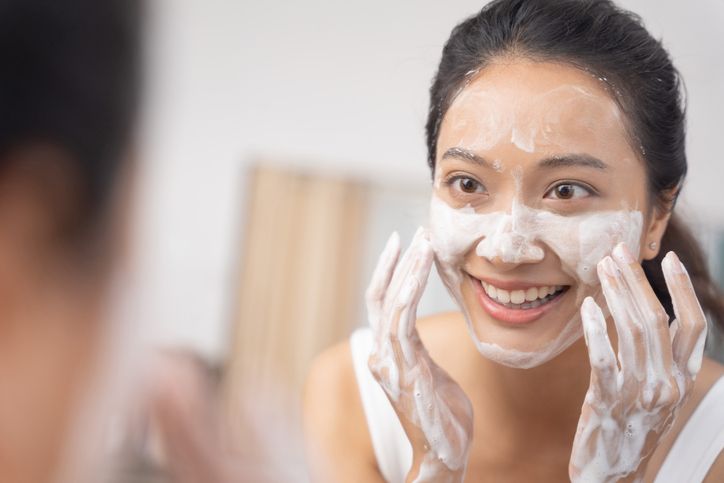
Even with the best intentions, certain skincare habits can lead to more cheek breakouts instead of fewer. These mistakes are common but easy to overlook—especially for those trying to manage oily skin, persistent acne, or clogged pores.
Over-cleansing can trigger excess oil production
Washing your face too often or using a harsh cleanser may strip your skin’s natural oils. Natural oil, or sebum, is influenced by hormones like androgens, which increase during puberty and contribute to acne formation on the jawline and chin. In response, your sebaceous glands produce more sebum, which can clog pores and lead to acne on cheeks. Stick to cleansing twice a day with a gentle cleanser designed for acne-prone skin.
Too many active ingredients can damage the skin barrier
Layering multiple strong products—like salicylic acid, benzoyl peroxide, and topical retinoids—can lead to irritation, dryness, and inflammation. This weakens your skin’s barrier and makes it easier for acne causing bacteria to spread. Space out these treatments or consult a board certified dermatologist to build a safe, effective routine.
Skipping moisturizer worsens oil imbalance
Oily skin still needs hydration. Without proper moisture, the skin may overcompensate by increasing oil production, which can clog pores and worsen acne vulgaris. Use a lightweight, oil-free, non-comedogenic moisturizer daily to help balance sebum production and support skin repair.
Using the wrong sunscreen can clog pores
Some sunscreens are too thick for acne-prone skin and can block hair follicles, especially on areas like the cheeks and nose. Choose non-comedogenic formulas to avoid triggering cheek acne, and avoid sunscreens with heavy oils or artificial fragrances that may irritate sensitive skin.
Ignoring makeup removal can lead to buildup
Going to bed without properly removing makeup leaves behind residue that mixes with excess oil and dead skin cells. This buildup clogs pores overnight and increases the risk of cheek breakouts. Always remove makeup thoroughly and follow up with a gentle cleanse before bed.
Cheek acne often gets worse from small, repeated mistakes. Paying attention to these details can help reduce inflammation, unclog pores, and improve how your skin responds to both everyday products and targeted acne treatments.

A Consistent Skincare Routine Helps Prevent Cheek Acne

Common belief
Some believe treating cheek acne requires complicated or expensive routines. In reality, sticking to simple steps with the right skincare products is more effective. When the skin is cleansed properly and not overloaded, it becomes easier to manage excess oil, remove dead skin cells, and prevent clogged pores.
What really helps prevent cheek acne
Cheek acne often starts with a buildup of sebum, skin cells, and acne causing bacteria. These get trapped in hair follicles, leading to inflammation. A basic skincare routine with the right products can help reduce breakouts and support long-term skin health—especially for those with oily skin or acne-prone areas like the cheeks, chin, and jawline. Consistently following a routine can effectively minimize breakouts.
Steps to build an acne-safe routine
Start and end each day with a gentle cleanser to remove oil, sweat, and bacteria without stripping the skin. Use products that contain salicylic acid to remove dead skin cells and keep pores clear. Add benzoyl peroxide as a spot treatment to reduce acne lesions and fight acne causing bacteria.
Avoid heavy or greasy skincare products that clog pores. Instead, choose lightweight moisturizers labeled as non-comedogenic. If breakouts continue, consider topical retinoids or ask a board certified dermatologist about stronger acne treatments, such as topical antibiotics or oral prescription medications.
Keeping your skincare routine simple and regular is one of the best ways to manage acne on cheeks and prevent new breakouts from forming.

Acne Treatment for Clearer Skin and Calmer Cheek Breakouts
A non-invasive way to unclog pores, reduce excess oil, and support skin repair
Cheek acne can be stubborn, especially when it involves clogged pores, oily skin, and inflammation that keeps coming back. For those dealing with persistent cheek breakouts, acne scars, or recurring whiteheads and blackheads, a targeted treatment that supports skin health from the surface down can help improve both appearance and texture.
The Acne Treatment is a non-invasive procedure designed for acne-prone skin. It works by clearing out dead skin cells and excess oil while soothing inflamed skin and balancing sebum production. This makes it especially helpful for those with cheek acne, hormonal acne, or skin concerns that haven’t responded well to over the counter treatments.
How Acne Treatment works
The session begins with a skin consultation and patch test to ensure skin compatibility. Treating acne with targeted procedures is crucial to achieving clearer skin. The first step involves a dual spiral suction and drainage system that exfoliates the skin while clearing clogged pores. This helps remove the dead skin cells and acne causing bacteria responsible for breakouts. It also reduces surface-level inflammation around the hair follicles.
Next, a medical-grade hydrating serum is infused into the skin. This serum calms the sebaceous glands, helps regulate oil production, and supports skin recovery. The combination of cleansing and hydration also helps improve the skin’s ability to repair, reducing acne lesions, preventing cheek acne from worsening, and promoting a more even tone.
Benefits for acne-prone skin
• Removes buildup: Deep-cleansing suction helps remove oil, dirt, and dead skin cells that clog pores.
• Reduces breakouts: Ongoing treatments help reduce acne on cheeks, nose, chin, and jawline.
• Improves skin texture: Supports collagen production to improve acne scars and skin tone.
• Balances oil: Hydrating serum helps control sebum without drying out the skin.
• No recovery time: The treatment is non-invasive and safe for oily or sensitive skin types.
This treatment is suitable for those with moderate to severe cheek acne, blackheads, whiteheads, and acne vulgaris. It’s ideal for anyone looking to treat cheek acne in a way that complements their skincare routine and supports long-term skin health.
Book the Acne Treatment now to start your journey toward clearer, calmer skin.
New Beauty's Acne TreatmentBook Now to Experience
Acne Treatment
1 Minute Self-Registration
Date should not be before minimal date
FAQ
What is the difference between cheek acne and fungal acne?
Cheek acne is usually caused by clogged pores, excess oil, and acne causing bacteria. It often appears as blackheads, whiteheads, or inflamed pimples. Fungal acne, on the other hand, is caused by an overgrowth of yeast in the hair follicles. It looks like small, uniform bumps and may feel itchy. While both conditions can show up in the same area, fungal acne won’t respond to traditional acne treatments like benzoyl peroxide or salicylic acid. Instead, it often requires antifungal products to treat effectively.
Can processed foods really worsen acne breakouts?
Yes, for some people, processed foods may trigger more acne breakouts. Foods high in refined sugar and low in nutrients can increase blood sugar levels and trigger hormonal fluctuations. This may increase sebum production and lead to clogged pores. While not everyone reacts the same way, reducing processed food intake and focusing on whole, nutrient-rich meals can help reduce inflammation and support skin health over time.
What skincare products should I avoid if I have acne on cheeks?
If you’re trying to treat cheek acne, avoid skincare products that are thick, oily, or comedogenic. Ingredients like mineral oil, lanolin, and certain silicones may clog pores, especially if your skin is already prone to breakouts. Also avoid harsh scrubs that can damage the skin barrier. Instead, look for products with ingredients like salicylic acid, topical retinoids, or gentle cleansers that help remove dead skin cells and balance oil production.
Why do I only get breakouts on my cheeks and not other areas?
Acne on cheeks may be related to lifestyle habits and environmental factors. This area is often in contact with phones, pillowcases, or hands, which can transfer bacteria and clog pores. It’s also common for hormonal acne to appear on the cheeks during certain times of the menstrual cycle. People with oily skin may find that their sebaceous glands produce more oil in specific areas of the face, leading to localized breakouts.
Are birth control pills effective for treating hormonal cheek acne?
Yes, hormonal birth control pills can help reduce acne caused by hormonal fluctuations, including cheek acne. These pills regulate hormone levels, especially androgens that increase oil production. They’re often prescribed to treat persistent acne when topical treatments aren’t enough. Not all types of birth control have the same effect, so it’s important to speak with a healthcare provider to find the best option for your skin concerns.
Recommended Articles
COPYRIGHT© NEW BEAUTY MANAGEMENT LIMITED 2025. ALL RIGHT RESERVED.

